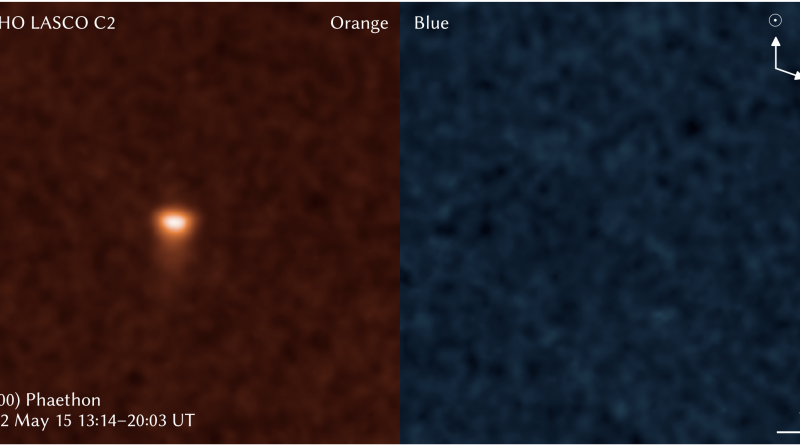NRL’s LASCO Telescope Collecting New Data on Asteroids and Comets
U.S. Naval Research Laboratory (NRL) scientists continue to break ground using the Large Angle and Spectrometric Coronagraph (LASCO) telescope. The telescope, which has been in operation for the past 27 years, is now collecting new information about the properties of asteroids and comets near the sun.
LASCO is one of 15 instruments on the joint NASA/ESA Solar and Heliospheric Observatory spacecraft launched in December 1995 to study the sun from its interior to its dynamic atmosphere and corona and its interaction with the entire solar system. It is a critical asset for heliophysics researchers that has revolutionized many areas of solar physics. Scientists and agencies worldwide rely on LASCO for operational space weather monitoring and forecasting. Its uninterrupted data stream provides near real-time warning of potentially hazardous Earth-directed coronal mass ejections.
Now, LASCO’s interchangeable imaging filters, which are sensitive to different wavelengths of light, are also being used to provide new insight into the chemical makeup of objects passing in front of its field of view and the processes they undergo as they experience extreme conditions in the near-sun environment.
“When a comet or asteroid gets close to the sun, the intense radiation environment can release a lot of sodium from the object’s surface,” said Karl Battams, Ph.D., a computational scientist in NRL’s Space Science Division and LASCO principal investigator. “We can use LASCOs filters to look for signatures of sodium or the presence of dust, helping us understand the processes occurring on the surface of the comet or asteroid.”
The environment near the sun is extraordinarily hostile to comets and asteroids. However, LASCO’s unique ability to image the near-sun region allows for studying the behavior of otherwise essentially inert asteroids and comets as they undergo extreme physical and chemical processes.
In early 2022, Battams and CalTech Planetary Science Ph.D. Candidate Qicheng Zhang, a former NRL summer intern, devised a unique observing plan to leverage LASCO’s capabilities, leading to a pivotal new result regarding near-sun asteroid Phaethon. Their study, soon to be published in the Planetary Science Journal, overturns the widely-held belief that Phaethon produces a significant quantity of dust as it passes by the sun, instead finding it releases sodium. This is a substantial result regarding the asteroid that is set to be visited during a Japanese Aerospace Exploration Agency Destiny+ mission in 2028.
“Even after 27 years, we are still finding novel ways to get unique science out of LASCO,” said Battams. “It was never intended to study comets, yet with these recent observations, LASCO has upended years of belief about this asteroid and again demonstrated its unique worth.”

